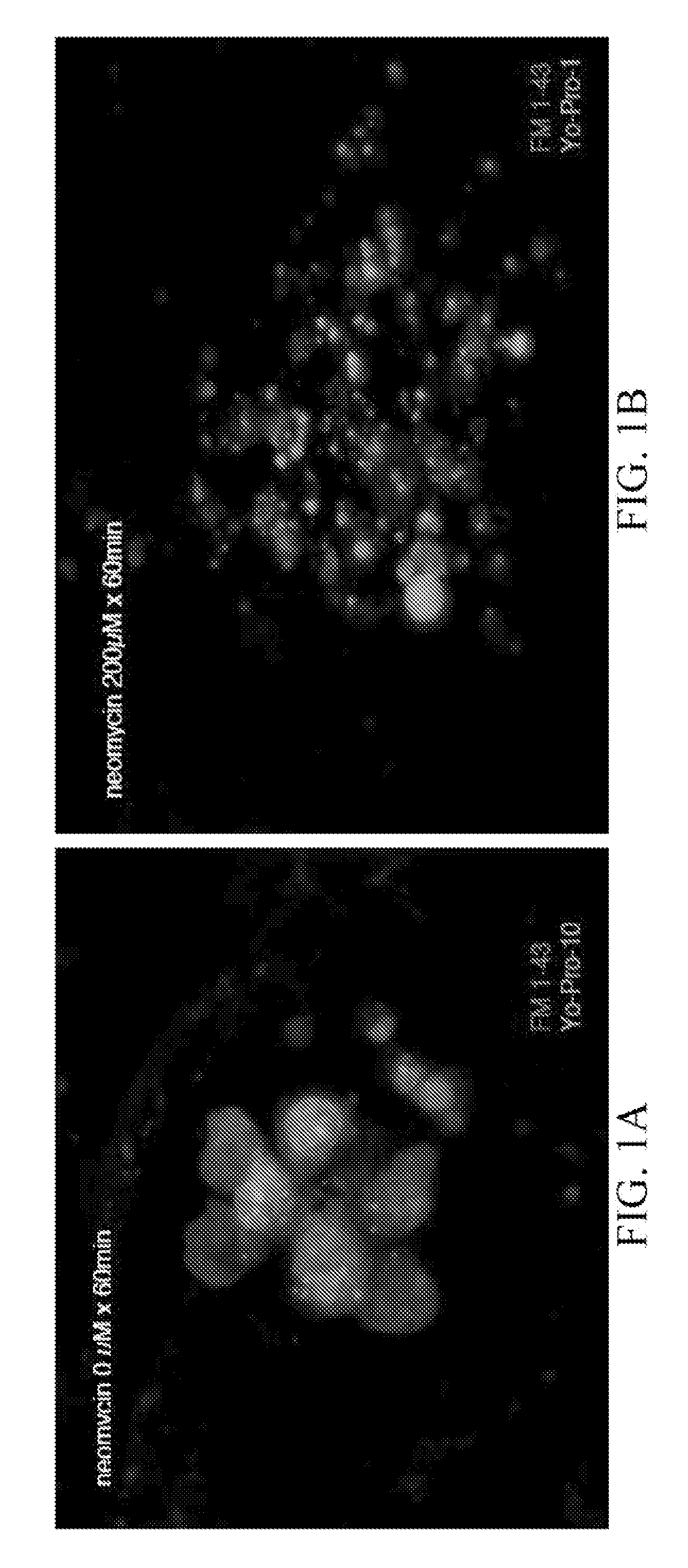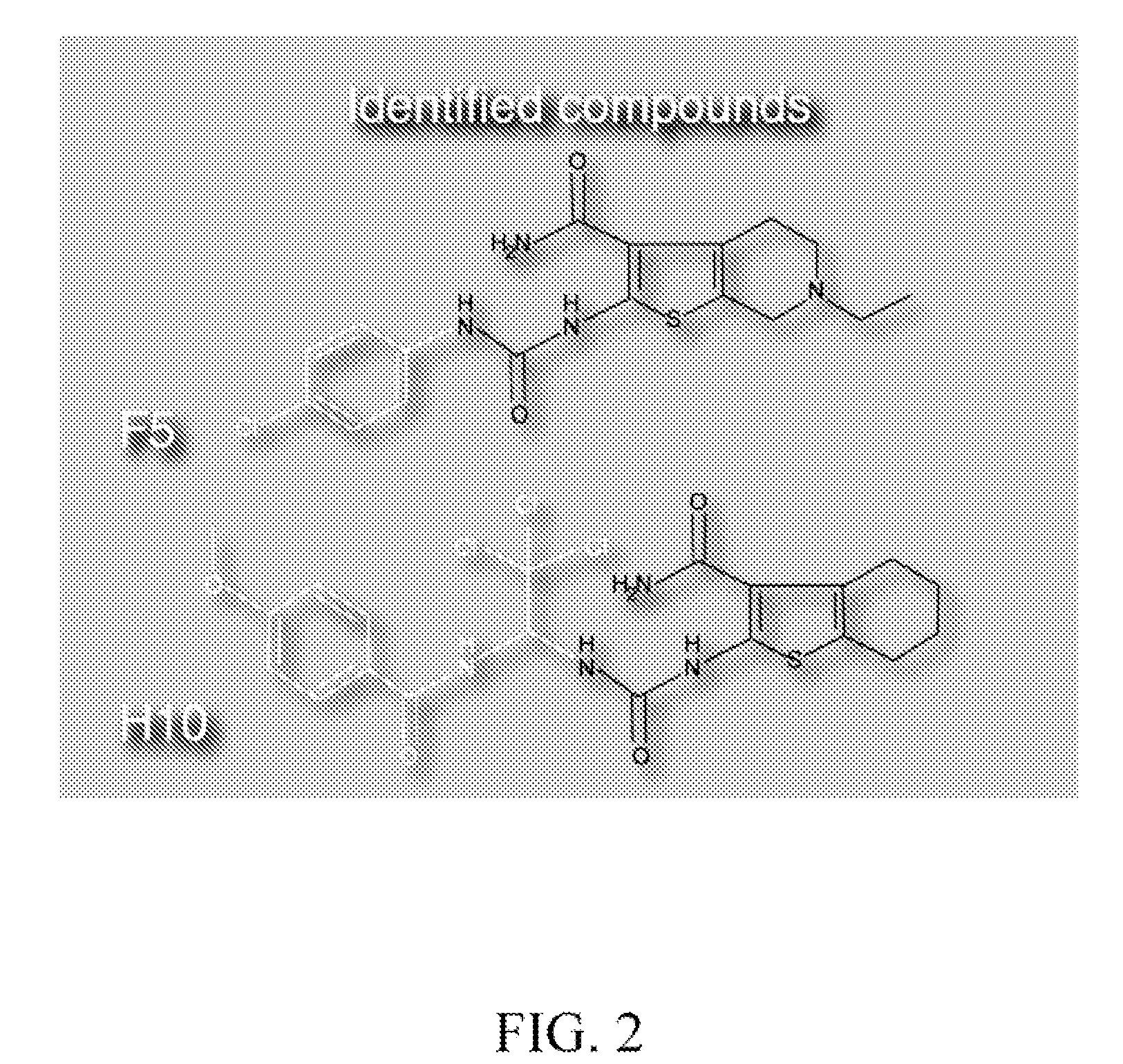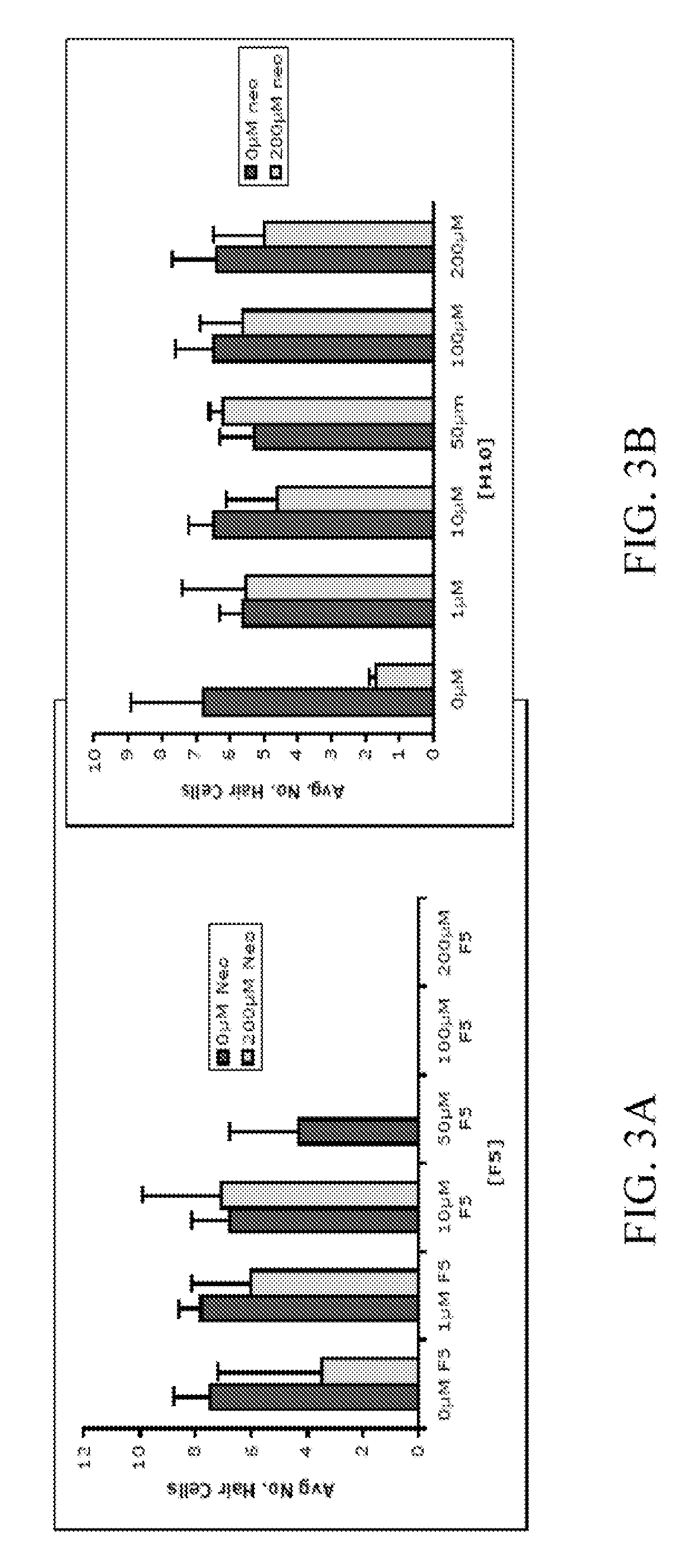Compounds that protect against sensory hair cell death
a technology of sensory hair cells and compounds, applied in the field of compounds that protect against sensory hair cell death, can solve the problems of less study of vestibulotoxic effects of such drugs on patient populations, and none of the foregoing references disclose the use of zebrafish for screening, so as to reduce, inhibit or prevent sensory hair cell damage or death
- Summary
- Abstract
- Description
- Claims
- Application Information
AI Technical Summary
Benefits of technology
Problems solved by technology
Method used
Image
Examples
example 1
Methods for Identifying Protective Compounds
Animals
[0143]Zebrafish embryos were produced by paired matings of adult fish maintained at 28.5° C. in the University of Washington zebrafish facility. Beginning at 4 days post fertilization (dpf), larvae were fed live paramecia. Larvae were maintained at a density of 50 per 100 mm2 petri dish in embryo medium (1 mM MgSO4, 120 μM KH2PO4, 74 μM Na2HPO4, 1 mM CaCl2, 500 μM KCl, 15 μM NaCl, and 500 μM NaHCO3 in dH2O) in a tissue incubator at 28.5° C. All animal procedures were approved by the University of Washington institutional Animal Care and Use Committee,
Vital Dye Staining
[0144]Larvae were placed in a transfer device fashioned from a 50 ml conical tube with one end cut off and a mesh cover at the bottom. FM 1-43 (n-(3-triethylammoniumpropyl)-4-(4-dibutylamino]-styryl)pyridinium dibromide; Molecular Probes, Eugene, Oreg.) labeling of lateral line neuromasts was achieved by immersing free swimming larvae in 3 μM FM 1-43 in embryo medium f...
example 2
Identification of Long-Lasting Protective Compounds that do Not Inhibit
Use of Small Molecule Screens to Identify Otoprotective Compounds Using the Lateral Line Hair Cells of Zebrafish
[0148]In order to identify compounds that protect hair cells of the lateral line from the toxic effects of the aminoglycoside neomycin, 10,960 small molecules were screened. 5 dpf larvae were double labeled with the fluorescent dyes FM 1-43 and Yo-Pro-1, pretreated with the compounds at a dose of 10 μm, exposed to 200 mM neomycin, and their hair cells evaluated after 1 hour, FIG. 1.
[0149]Two (2) of 10,960 compounds were identified in the screen to protect hair cells from neomycin induced hair cell death, 2-({[(4-chlorophenyl)amino]carbonyl}amino)-6-ethyl-4,5,6,7-tetrahydrothieno[2,3-c]pyridine-3-carboxamide (C17 H19 Cl N4 O2 S) (F5) and 2-{[({2,2,2-trichloro-1-[(4-methoxybenzoyl)amino]ethyl}amino)carbonothioyl]amino}-4,5,6,7-tetrahydro-1-benzothiophene-3-carboxamide (C20 H21 Cl3 N4 O3 S2) (H10). F5 and ...
example 3
FDA-Approved Protective Compounds Identified Via High-Throughput Screening
[0155]A library of 1040 FDA approved compounds (NINDS Custom Collection II, Microsource, Inc.) were screened using a high-throughput assay. This screen identified seven drugs that protect against aminoglycoside-induced hair cell death.[0156]1. Cepharanthine is a biscoclaurine alkaloid from Stephania cepharantha. It is thought to have membrane-stabilizing activity and has been used for the treatment of nasal allergy and snake venom-induced hair cell death,[0157]2. Amsacrine is an acridine dye derivative that is thought to inhibit topoisomerase II and cause DNA strand breaks.[0158]3. Drofenine is an anticholinergic drug that acts on smooth muscles and is used as an antispasmodic. It acts on M1 and M2 muscarinic receptors and also has been shown to have inhibitory effects on butyrylcholinesterase.[0159]4. Phenoxybenzamine is an alpha-adrenergic blocker used for hypertension.[0160]5. N,N-hexamethyleneamiloride is ...
PUM
 Login to View More
Login to View More Abstract
Description
Claims
Application Information
 Login to View More
Login to View More - R&D
- Intellectual Property
- Life Sciences
- Materials
- Tech Scout
- Unparalleled Data Quality
- Higher Quality Content
- 60% Fewer Hallucinations
Browse by: Latest US Patents, China's latest patents, Technical Efficacy Thesaurus, Application Domain, Technology Topic, Popular Technical Reports.
© 2025 PatSnap. All rights reserved.Legal|Privacy policy|Modern Slavery Act Transparency Statement|Sitemap|About US| Contact US: help@patsnap.com



